Cellular milieu imparts distinct pathological α-synuclein strains in α-synucleinopathies
- PMID: 29743672
- PMCID: PMC5970994
- DOI: 10.1038/s41586-018-0104-4
Cellular milieu imparts distinct pathological α-synuclein strains in α-synucleinopathies
Abstract
In Lewy body diseases-including Parkinson's disease, without or with dementia, dementia with Lewy bodies, and Alzheimer's disease with Lewy body co-pathology 1 -α-synuclein (α-Syn) aggregates in neurons as Lewy bodies and Lewy neurites 2 . By contrast, in multiple system atrophy α-Syn accumulates mainly in oligodendrocytes as glial cytoplasmic inclusions (GCIs) 3 . Here we report that pathological α-Syn in GCIs and Lewy bodies (GCI-α-Syn and LB-α-Syn, respectively) is conformationally and biologically distinct. GCI-α-Syn forms structures that are more compact and it is about 1,000-fold more potent than LB-α-Syn in seeding α-Syn aggregation, consistent with the highly aggressive nature of multiple system atrophy. GCI-α-Syn and LB-α-Syn show no cell-type preference in seeding α-Syn pathology, which raises the question of why they demonstrate different cell-type distributions in Lewy body disease versus multiple system atrophy. We found that oligodendrocytes but not neurons transform misfolded α-Syn into a GCI-like strain, highlighting the fact that distinct α-Syn strains are generated by different intracellular milieus. Moreover, GCI-α-Syn maintains its high seeding activity when propagated in neurons. Thus, α-Syn strains are determined by both misfolded seeds and intracellular environments.
Conflict of interest statement
There are no competing financial or non-financial interests.
Figures
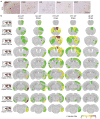



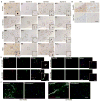
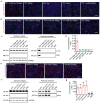
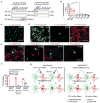
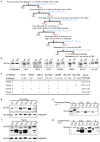






Comment in
-
Sabotage by the brain's supporting cells helps fuel neurodegeneration.Nature. 2018 May;557(7706):499-500. doi: 10.1038/d41586-018-04988-3. Nature. 2018. PMID: 29777188 Free PMC article.
-
α-Synuclein strains in multiple system atrophy: A product of their environment?Mov Disord. 2018 Aug;33(8):1270. doi: 10.1002/mds.90. Mov Disord. 2018. PMID: 30230622 No abstract available.
References
Publication types
MeSH terms
Substances
Grants and funding
LinkOut - more resources
Full Text Sources
Other Literature Sources
Medical
Molecular Biology Databases
Research Materials
Miscellaneous

